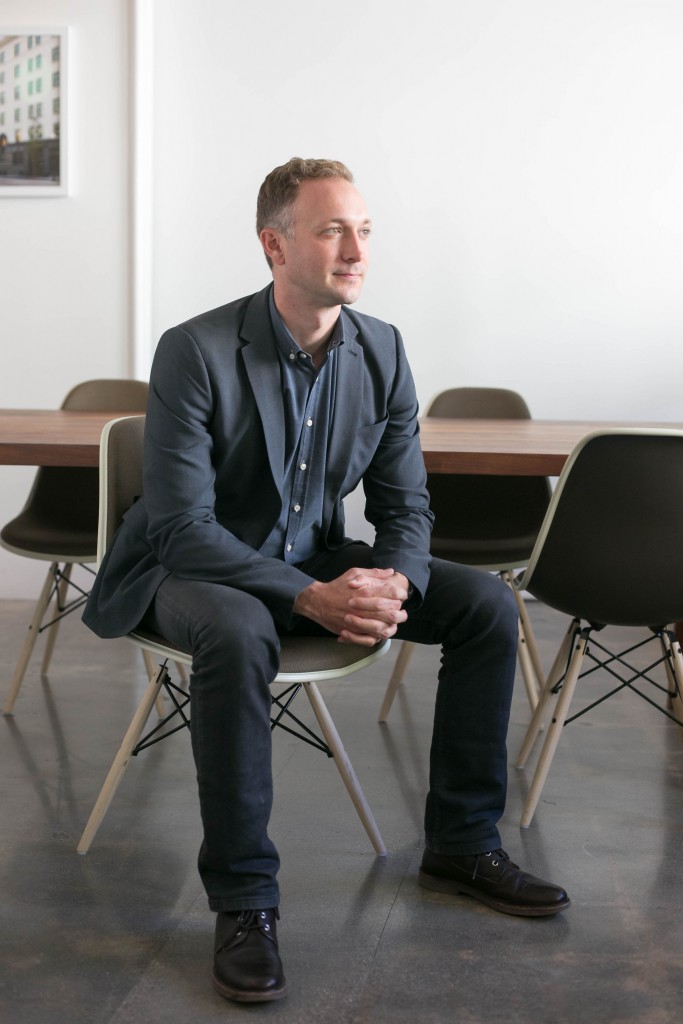Share This
Related Posts
Tags
Western Focused
By Leah Etling on Jul 19, 2017 in News, People
Casey Lynch and Mike Brown were graduate school classmates at UCLA when they started their real estate investme nt and development company, LocalConstruct, with limited funds and bona fide sweat equity.
nt and development company, LocalConstruct, with limited funds and bona fide sweat equity.
“We bought a $55,000 condominium in Fontana, Calif. that we painted and renovated ourselves. We were at Home Depot, buying our own supplies,” recalled Lynch. Flash forward nearly a decade, and LocalConstruct has become a thriving small firm with multifamily and mixed-use projects in California, Colorado, Idaho and Montana. The Los Angeles-based company, a Yardi client, has developed 2,000 apartment units to date.
Lynch and Brown have a specific vision for urban infill development. Seeking out markets with plentiful jobs but limited work-proximate housing, they have hit a sweet spot where limited supply meets unprecedented demand.
We talked with Lynch about LocalConstruct’s market choices and formula for success.
You started your company in 2008, when real estate was in a desperate place. Why?
Lynch: We saw a great opportunity to start an entrepreneurial enterprise, given the volatility in the market at the time. We raised a small fund to go out and buy single family homes and convert them into real properties in Los Angeles. You always hear developers who have been in the business 30 to 40 years talk about their first deal and working their way up the ladder. For us and our story, that would be true.
Things have changed tremendously since then. What happened to LocalConstruct in the last nine years?
Lynch: We went from one unit projects to 2 to 4 to 8 to 20 to 100 to 300. We have a presence in four states in the West and we are focused on infill housing strategies, primarily rental housing, and we are focused on emerging markets that have urban qualities. Even in a city in LA where we are still active, we focus on what we call “emerging submarkets” that have historically not been subject to denser development, but that we see as opportunities to deliver housing closer to jobs.
What areas of LA does that include?
Lynch: We have a presence in Eagle Rock, Echo Park, Silver Lake, and East Hollywood. These are older neighborhoods, most of them originally suburbs of downtown Los Angeles more than 100 years ago. These are great examples of the trend in urbanization we are seeing nationwide. They have been sleepy areas for a long time, but given the rise of urbanization we are seeing more people move to these neighborhoods and seek higher quality housing.
You see a lot of people leaving Southern California for other locales. Why do you think that is?
Lynch: The trend is the flight of the middle class from coastal California to more affordable areas. Statistically, people only move for two reasons. They move because of access to a better labor market or affordability of housing. Given the regulatory obstacles that we face in California to building enough housing to keep up with demand, what we are seeing is people leaving and moving to places like Denver, Salt Lake City, Boise, or Austin. These are second or third tier markets where housing is much cheaper.
So you’re following this trend, which is one reason why you ended up with work in Boise, Idaho. What attracted you to that market?
Lynch: Boise is a super vibrant small city with an urban core that has many of the same features you’d find in a much larger city. But historically, there has been no housing downtown. It’s a 12-hour city where people go to work, get in their car, drive home and come back the next morning. Boise is going through the same evolution that somewhere like downtown Los Angeles has gone through, where people want to live closer to jobs and services and not depend on cars every day.
What is your flagship project in Boise?
Lynch: We worked with the National Park Service and Capital City Development Corporation, a local redevelopment agency in Boise, to rehabilitate the Owyhee, a historic building that was the oldest hotel in the state of Idaho. This was a public private partnership effort in which we worked with NPS to get it registered as a historic building and received federal tax credits. We eased the façade of the building to the redevelopment agency, so they are responsible for maintaining the exterior. They also contributed some public funding to improve the infrastructure to the property.
What did you convert the space into?
Lynch: We converted the building into a mix of apartments, retail and office space. The apartments are really the first urban apartments that Boise has ever seen, and we received an incredible response from the public. We opened over three years ago and have essentially been 100 percent occupied since the day we opened. (Ed. Note: a one bedroom at the Owyhee rents for around $1300.)
You’re also active in Colorado Springs, Colorado and in Missoula and Bozeman, Montana. What are the overarching principles you apply to projects in all of these places?
Lynch: What we’ve tried to do in most of these smaller markets is take the best practices that we’ve learned in a big market like LA and apply them to smaller places. People are receptive to these same principles of mixed use, more urban-style development and well-designed buildings, which is an overarching theme for us.
We’re not just trying to provide low cost housing nor are we trying to provide luxury housing, what we are trying to do is provide high quality housing to the middle market – to a teacher, a policeman, a graduate student — and to enhance quality of life for people that live in our buildings. We do that by being thoughtful with design and with how we program the developments.
